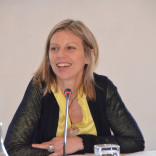About the Hub
The IMISCOE Migration Research Hub brings knowledge on migration under one roof.
From the latest literature, to comprehensive topical indexes, to an international and multidisciplinary expert database. Drawing on a combination of digital resources and thematic expertise, it aims to be the go-to resource for systematic knowledge accumulation and collaborative knowledge management in migration studies.
»The database of migration studies
»The taxonomy of migration studies
»Experts in migration studies
The Migration Research Hub was built during the IMISCOE-led Horizon 2020 project, CrossMigration (2018-2020). The project is now fully integrated into and maintained by IMISCOE.
Frequently Asked Questions
-
What is the Migration Research Hub?
The Migration Research Hub is the home of a combination of free tools that help you to systematically navigate the growing field of migration studies. Modelled after platforms in other disciplines, such as PhilPapers, it has been built by the research community for the research community. Whether you are a student looking to acquaint yourself with the literature or a seasoned researcher trying to map developments in scholarship over time, the following tools bring it all under one roof.
-
Research Database
The database forms the biggest part of the Hub. Over 100,000 items of research are indexed here, including journal articles, book chapters, reports, projects, datasets, and policy briefs. All of this material can be browsed, filtered, and even statistically analysed for your research purposes. Can’t find what you’re looking for? You are always welcome to submit research to the Hub by logging in and going to My Submissions.
-
Taxonomy of Migration Studies
Every item on the Hub is categorized into the taxonomy of migration studies. The taxonomy is divided into four branches: Topics, Disciplines, Methods, and Geographies. The taxonomy topics were devised by a global and interdisciplinary team of thematic experts in Migration Drivers, Migration Forms, Migration Infrastructures, Migration Governance, and Migration Consequences, in consultation with the broader community.
You can find the research that has been produced on any of these topics by following the links on the Taxonomy page. This might be useful when compiling grant applications, designing university courses, or simply browsing to broaden your research horizons; there are many uses for the taxonomy.
-
Expert Database
The expert database allows migration researchers and governance stakeholders to present their expertise and open up opportunities for collaboration. Experts can associate themselves with parts of the taxonomy, add their publications, and link to their ORCiD account.
Have you participated in migration research projects or authored publications related to migration? Let others know your expertise and stay in the loop about future developments by publishing your own free profile on the Hub: over 1,000 experts have already joined!
-
CrossMigration Output
The Migration Research Hub was the central output of the IMISCOE-led Horizon 2020 project, CrossMigration. This project also conducted other research of its own:
- Methods and Ethics Briefs (led by CEMIS and ICMPD): These are short reflections on methodological, epistemological, and ethical issues in migration studies.
- Migration Policy Indicators (led by MPG): A collection and analysis of the most conceptually, statistically, and empirically relevant indicators for migration-related policies in Europe.
- Migration Scenarios (led by IOM-GMDAC and NIDI): Descriptions of alternative future realities of migration to Europe & the results of a Delphi survey of 178 migration experts.
- Strategic Research Agenda (led by CNRS and Verona University): Recommendations for funding agencies regarding under-researched and highly-relevant topics in the field of migration studies.
- Project publications: Including policy briefs on key knowledge questions in migration studies (led by MPI Europe) and journal articles based on CrossMigration research.
- The Textbook of Migration Studies (coming soon!)
-
-
How does it work?
-
Where does the data come from?
Important to note from outset is that the Migration Research Hub does not host research, but, as a hub, it supplies bibliographic metadata and links to the original webpages of articles, book chapters, projects, and so on. The data in the research database comes from a combination of automatic imports and manual submissions.
For the automatic imports we have established partnerships with Web of Science, CrossRef, and Dimensions to source bibliographic metadata, DOI numbers, and citation badges respectively. As well as this, there are API integrations with various websites listed on our Sources page.
The manual submissions are supplied by users. Although the automatic imports provide over 90% of the data, manual submissions help ensure a global coverage of the field since many scientific indexes lack good coverage of non-English literature.
-
How does the data reach the database?
During the CrossMigration project, the team established criteria for searching existing indexes for migration-related research. To obtain relevant metadata from Web of Science and CrossRef, they compiled (a) a list of journals, book series, report series, datasets, and so on that deal with migration, and (b) a complex keyword search query to also identify migration research from non-migration-specific sources.
The metadata from the results of the searches for (a) and (b) are then harvested into the back-end database (comprising over 500,000 items), where they are filtered so that research on, for instance, cell migration or elk migration is excluded. Since several journals in (b) are from broader disciplines, such as Political Science, articles from these journals that do not relate to migration are also excluded.
The result of this large-scale searching and filtering - as well as the manual uploads of research metadata - is the Hub’s research database.
-
How does the research database link to the Taxonomy?
The taxonomy acts as a set of secondary filters that aim to identify research on specific topics within the research database.
Thanks to experts in the themes of Migration Drivers, Migration Infrastructures, Migration Forms, Migration Governance, and Migration Consequences, each topic is connected to a theory-driven complex search string which searches the entire database and links results back to the topic. (NB. With manual entries, users can also manually connect research to topics, which overrides this system). This means that research items can be associated with multiple taxonomy topics.
The taxonomy “landing pages”, therefore provide historical overviews of all the research produced on a particular topic/within a particular discipline/using a particular method/focused on a particular geographic area. Along with the visualization and statistical features of the Hub, this can facilitate systematic literature reviews and help researchers to map specific areas of the field.
-
Where does the expert database come from?
The expert database is a database of the self-curated expert profiles of migration scholars and practitioners, showcasing their research and topical expertise. If you have conducted research related to migration or are involved in the governance of migration-related issues, then you can sign up for free and create your own profile.
-
-
What can I do with it?
There are many uses of the Migration Research Hub, from laying the groundwork for a systematic literature review, to reaching out to topical experts to establish collaboration, to finding out what research has already been completed as you construct a grant proposal. For a series of quick video introductions to the Hub, see our Help page.
-
Why should I create an expert profile?
As one of the foremost experts in the field, having your profile and your research available for the migration research community to see will help make your research even more widely available and read. The great benefit of the expert profiles on the Migration Research Hub is that you will be able to associate yourself with topics, methods, disciplines, and geographical focuses using the taxonomy. This is a unique opportunity to ensure that you are at the forefront of exciting developments in how research is accumulated, systematised and shared.
-
How can I be part of developing the Hub?
There are several opportunities to work with the team in developing the Hub. Contact the IMISCOE Network Office info@imiscoe.org with your ideas.
Database Analytics
This provides analytics on the numbers behind the database. See how research is distributed across years, item-types, taxonomy topics, publications, and countries of authorship. It’s a useful tool for getting a snapshot of the field as a whole or a sub-field within it!
665,547
Total items
in the database
162,577
Total items
related to migration
449,151
Total items
with abstracts
3,754
Total experts
in the database
The initial research team
The initial research team was part of CrossMigration project, funded through Horizon 2020. The project began in March 2018 and was led by IMISCOE, Europe’s largest network of scholars in migration and integration.
WP1: Policy Network & key knowledge questions
Migration Policy Institute Europe, Brussels (MPI Europe) →
-
 Camille Le Coz
Camille Le Coz
-
 Elizabeth Collett
Elizabeth Collett
-
 Hanne Beirens
Hanne Beirens
-
 Lena Kainz
Lena Kainz
-
 Liam Patuzzi
Liam Patuzzi
WP2: Research Network & Taxonomy
Erasmus Universiteit Rotterdam (EUR) →
-
 Peter Scholten
Peter Scholten
-
 Asya Pisarevskaya
Asya Pisarevskaya
-
 Nathan Levy
Nathan Levy
-
 Adham Aly
Adham Aly
-
 Iris Vermeulen
Iris Vermeulen
WP3: Research synthesis
International Centre for Migration Policy Development, Vienna (ICMPD) →
Danube University Krems →
Deutsche Zentrum für Integrations- und Migrationsforschung (DeZIM) →
Centrum voor Migratie en Interculturele Studies, University of Antwerp (CeMIS) →
-
 Christiane Timmerman †
Christiane Timmerman †
-
 Fiona-Katharina Seiger
Fiona-Katharina Seiger
WP4: Systematic cross-national knowledge on Migration Drivers
Danube University Krems →
-
 Mathias Czaika
Mathias Czaika
-
 Elisabeth Strasser
Elisabeth Strasser
-
 Dino Pitoski
Dino Pitoski
University of Oxford →
WP5: Systematic cross-national knowledge on Migration Infrastructures
Deutsche Zentrum für Integrations- und Migrationsforschung (DeZIM) →
WP6: Systematic cross-national knowledge on Migration Flows
Peace Research Institute Oslo (PRIO)
Centre of Migration Research, Uniwersytet Warszawski (CMR) →
-
 Justyna Salamońska
Justyna Salamońska
-
 Magdalena Kleszczewska
Magdalena Kleszczewska
-
 Agata Górny
Agata Górny
-
 Marta Anacka
Marta Anacka
-
 Pawe∤ Kaczmarczyk
Pawe∤ Kaczmarczyk
Institute de Geografia e Ordenamento de Território, Universidade de Lisboa →
WP7: Systematic cross-national knowledge on Migration Policies
European University Institute (EUI), Florence →
-
 Andrew Geddes
Andrew Geddes
-
 Anna Triandafyllidou
Anna Triandafyllidou
-
 Claudio Mazzetti
Claudio Mazzetti
-
 Alexandra Ricard-Guay
Alexandra Ricard-Guay
-
 Leila Hadj-Abdou
Leila Hadj-Abdou
WP8: Setting migration indicators
Migration Policy Group Brussels →
-
 Thomas Huddleston
Thomas Huddleston
-
 Giacomo Solano
Giacomo Solano
-
 Alexander Wolffhardt
Alexander Wolffhardt
WP9: Developing migration scenarios
International Organisation for Migration – Global Migration Data Analysis Center (IOM-GMDAC), Berlin →
Netherlands Interdisciplinary Demographic Institute (NIDI), The Hague →
WP10: Strategic Research Agenda
National Centre for Scientific Research, Paris (CNRS) →
Verona University →
-
 Riccardo Pozzo
Riccardo Pozzo
-
 Claudio Paravati
Claudio Paravati
WP11: Project management
Erasmus Universiteit Rotterdam (EUR) →
The partners
A consortium of leading migration scholars at 15 institutions from across Europe was advised by a global network of researchers to create this Migration Research Hub. The project began in March 2018 and was led by IMISCOE, Europe’s largest network of scholars in migration and integration.
External advisors & research network
External expert consultants
-
 Russell King
Russell King
-
 Rinus Penninx
Rinus Penninx
-
 Olaf Kleist
Olaf Kleist
Global Advisory Board
-
 Kateryna Vaschenko (Ukraine)
Kateryna Vaschenko (Ukraine)
-
 Yuk Wah Chan (Hong Kong)
Yuk Wah Chan (Hong Kong)
-
 Fernando Fischman (Argentina)
Fernando Fischman (Argentina)
-
 Andrea Stilman (Argentina)
Andrea Stilman (Argentina)
-
 Laura Gottero (Argentina)
Laura Gottero (Argentina)
-
 Michael Owiso (Kenya)
Michael Owiso (Kenya)
-
 Aderanti Adepoju (Nigeria)
Aderanti Adepoju (Nigeria)



















